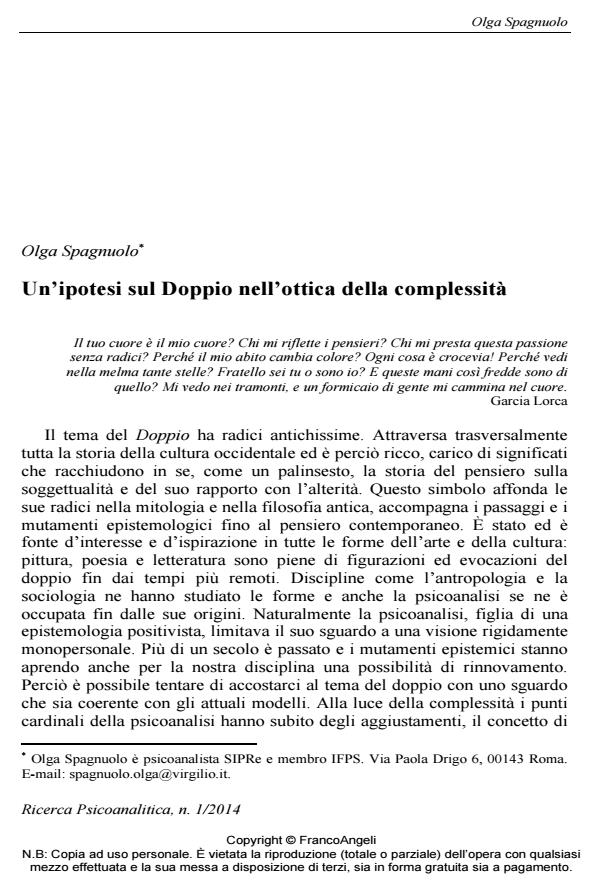A hypothesis on the double in light of complexity
Journal title RICERCA PSICOANALITICA
Author/s Olga Spagnuolo
Publishing Year 2014 Issue 2014/1
Language Italian Pages 18 P. 73-90 File size 689 KB
DOI 10.3280/RPR2014-001006
DOI is like a bar code for intellectual property: to have more infomation
click here
Below, you can see the article first page
If you want to buy this article in PDF format, you can do it, following the instructions to buy download credits

FrancoAngeli is member of Publishers International Linking Association, Inc (PILA), a not-for-profit association which run the CrossRef service enabling links to and from online scholarly content.
The question of the Double is rooted in ancient mythology and philosophy and has been present along with epistemological changes and movements until today. Although psychoanalysis derived from a positivist epistemology, it has been Paying attention to the double from its very beginning but limited its focus to a monopersonal stance. After more than a century we can try today to approach the double in a way more consistent with our current models. In time the basics of psychoanalysis have adjusted to complexity and more and more importance is currently being paid to the question of identity and relationships that lead us directly to the core of the issue of the double. If we look at the subject of experience at the centre of its world and emerging from relations, this figure can become the metaphor of how we get in touch with, distinguish and know ourselves and the other. It could therefore express the specific way we have to define the environment and define ourselves with respect to it (interpretation of the external world and construction of the so called internal world) in a condition of perfect reciprocity and without interruptions.
Keywords: Complexity, double, projective identification, identity, disturbing, subject
Olga Spagnuolo, Un’ipotesi sul Doppio nell’ottica della complessità in "RICERCA PSICOANALITICA" 1/2014, pp 73-90, DOI: 10.3280/RPR2014-001006